Urban art has become a powerful tool for expression, bringing innovation, social commentary, and beauty to cities. Among the most striking trends is the creation of giant cardboard characters — enormous, interactive sculptures full of life that take over public spaces, cultural festivals, and artistic events around the world. These figures not only captivate audiences but also inspire reflections on creativity, sustainability, and community involvement.
The Creation Process of Large-Scale Cardboard Sculptures
Building giant cardboard characters involves careful techniques, planning, and hands-on craftsmanship — blending art, engineering, and sustainability.
Choosing the Right Material and Planning
- Type of cardboard: For large sculptures, strong materials are essential — often thick, corrugated cardboard or layered sheets bonded for extra durability.
- Detailed design: Artists develop sketches and 3D models, often using design software to calculate accurate dimensions and fitting points.
- Internal structure: Many sculptures require internal frameworks made of lightweight wood, PVC pipes, or even metal to ensure stability, especially for tall or moving parts.
Assembly and Shaping
- Cutting and folding: Cardboard pieces are shaped through strategic cuts and folds to create rounded forms and strong joints.
- Bonding: Specific adhesives, tape, or sometimes staples are used to hold everything securely.
- Finishing: Once assembled, the sculptures are painted or covered with paper and textures that give personality and color to the characters.
Public Art Projects and Cultural Festivals
Giant cardboard characters shine in public installations and cultural events, bringing art directly into people’s daily lives.
Purpose-Driven Public Art
These large-scale sculptures transform public spaces like parks, plazas, and streets into open-air galleries. Often, they carry social, environmental, or political messages, sparking conversations among viewers.
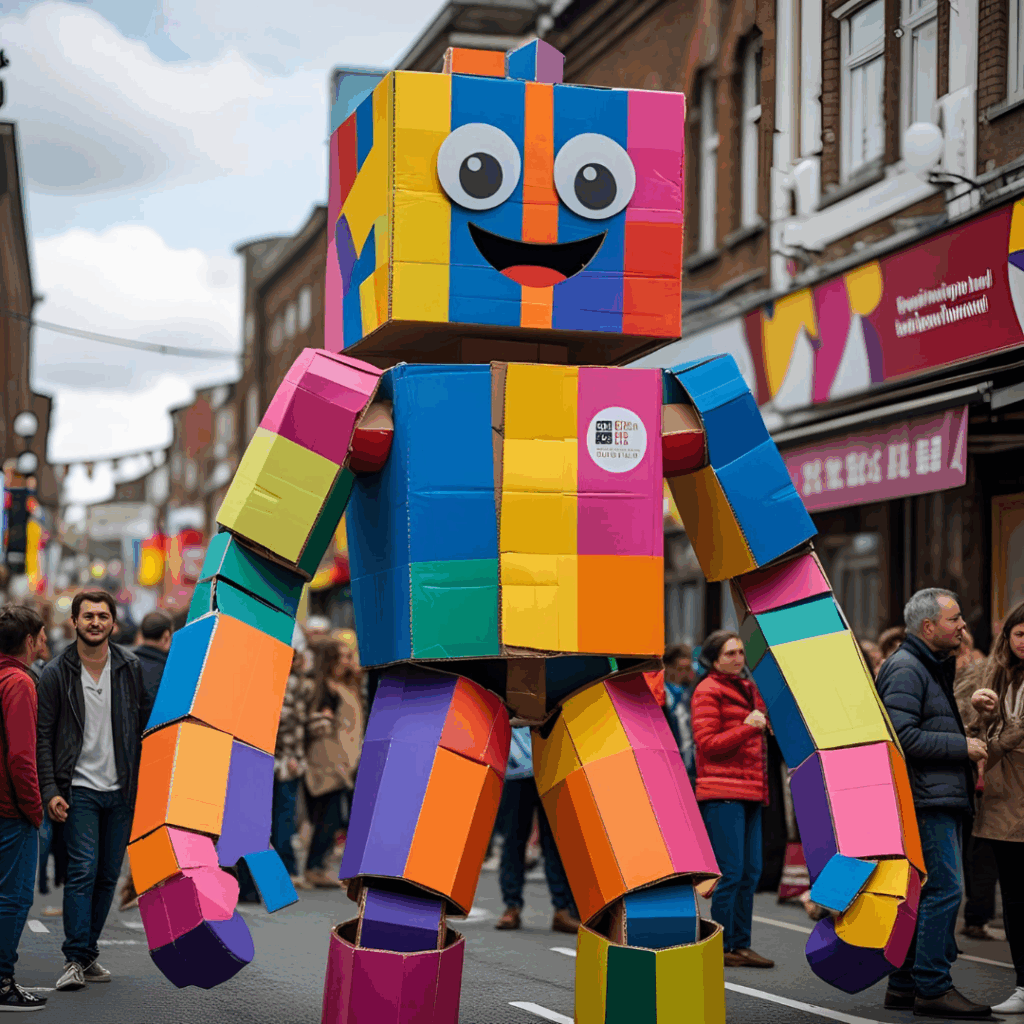
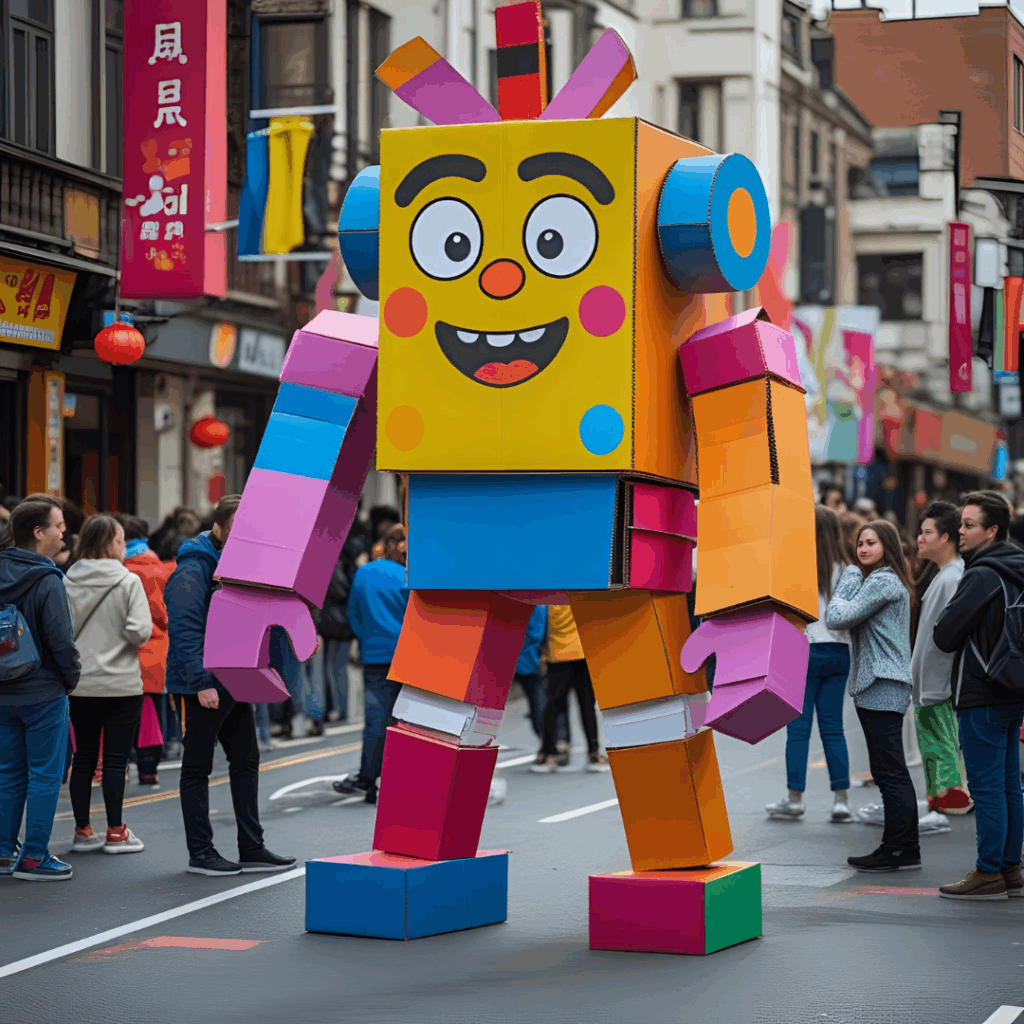
Cultural Festivals
Many festivals around the globe feature giant characters as main attractions. Street parades, art fairs, and cultural gatherings use these creations to engage audiences of all ages.
One notable example is Burning Man (USA), where massive installations — often made from cardboard, wood, or recycled materials — serve as dramatic visual storytelling tools.
Community and Collective Collaboration
Many of these projects are community-based, involving schools, art collectives, and volunteers. This collaborative process fosters local pride and strengthens social bonds through shared creativity.
How to Add Moving Parts and Bring Characters to Life
One of the most engaging aspects of these cardboard giants is their potential for motion. With the right techniques, static figures can be animated, creating interactive experiences.
Motion Techniques
- Articulated joints: Hinges made from strong tape or flexible cardboard allow limbs and heads to move.
- Lever systems: Wooden rods, ropes, and pulleys can be added for manual control of movements.
- Simple mechanisms: Some characters include basic gear or crank systems to trigger motion during performances or parades.

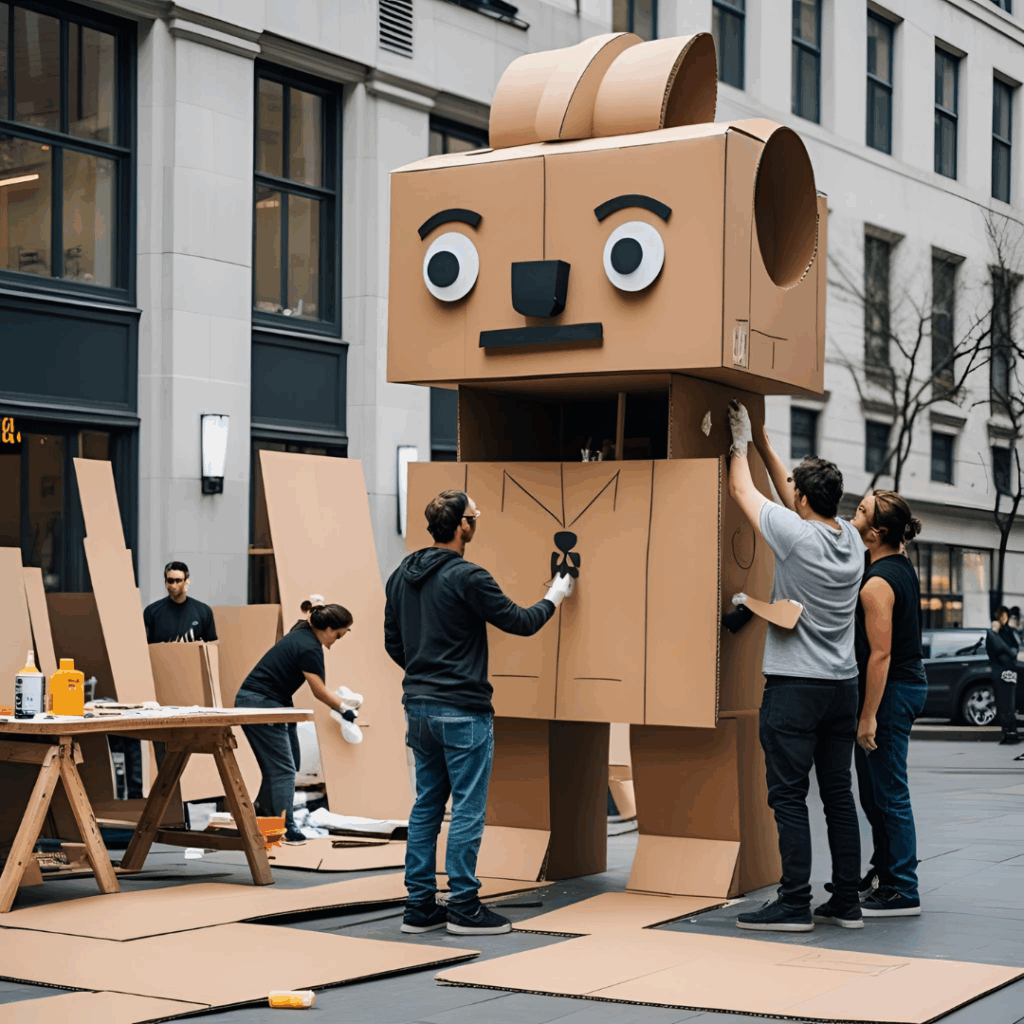
Lighting and Special Effects
Incorporating LED lights, sound effects, and visual projections enhances the characters’ presence, making them even more immersive and entertaining.
Audience Participation
In some installations, visitors are invited to interact directly with the sculptures — turning cranks, pulling ropes, or triggering sensors that activate movement or sound. This creates a deeper connection between the audience and the artwork.
Inspiration from Famous Artists and Creative Collectives
The giant cardboard character movement is part of a broader artistic trend that draws from global inspirations, sustainable practices, and collaborative efforts.
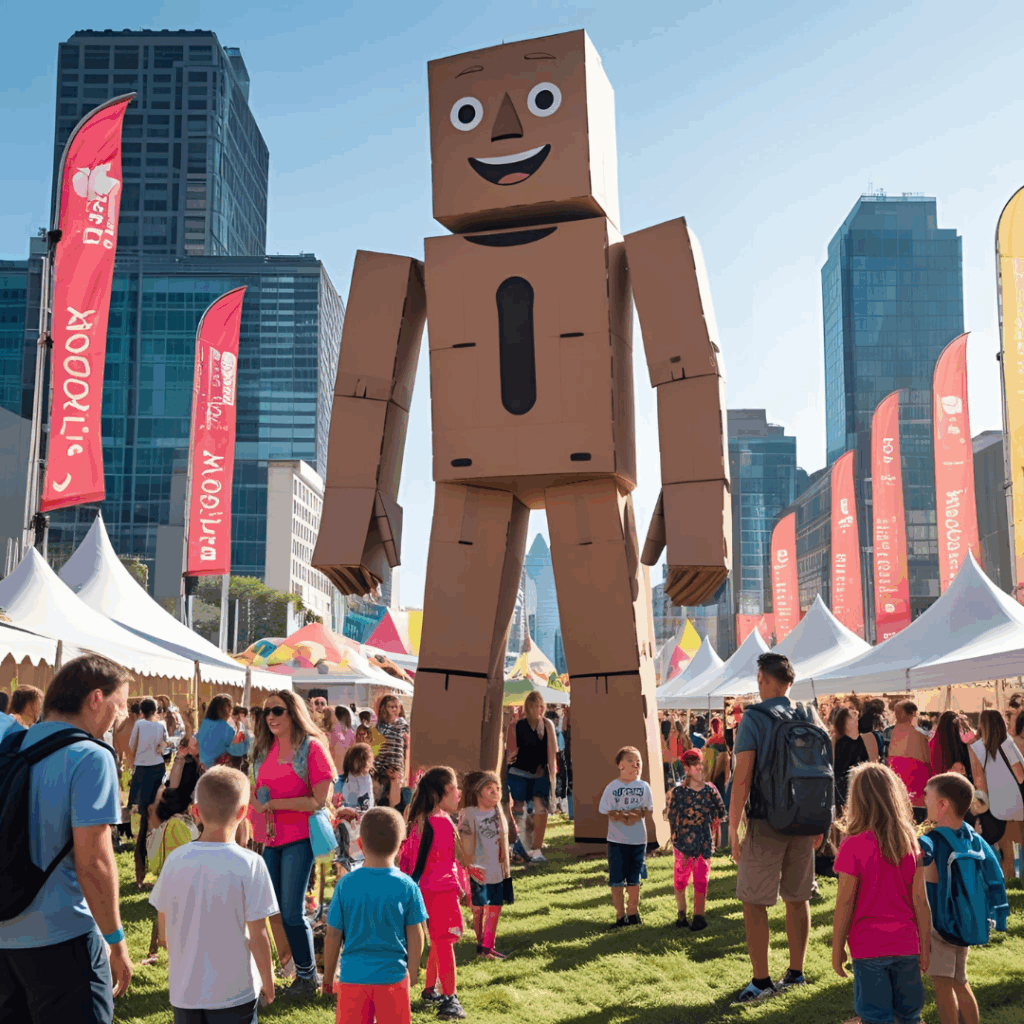
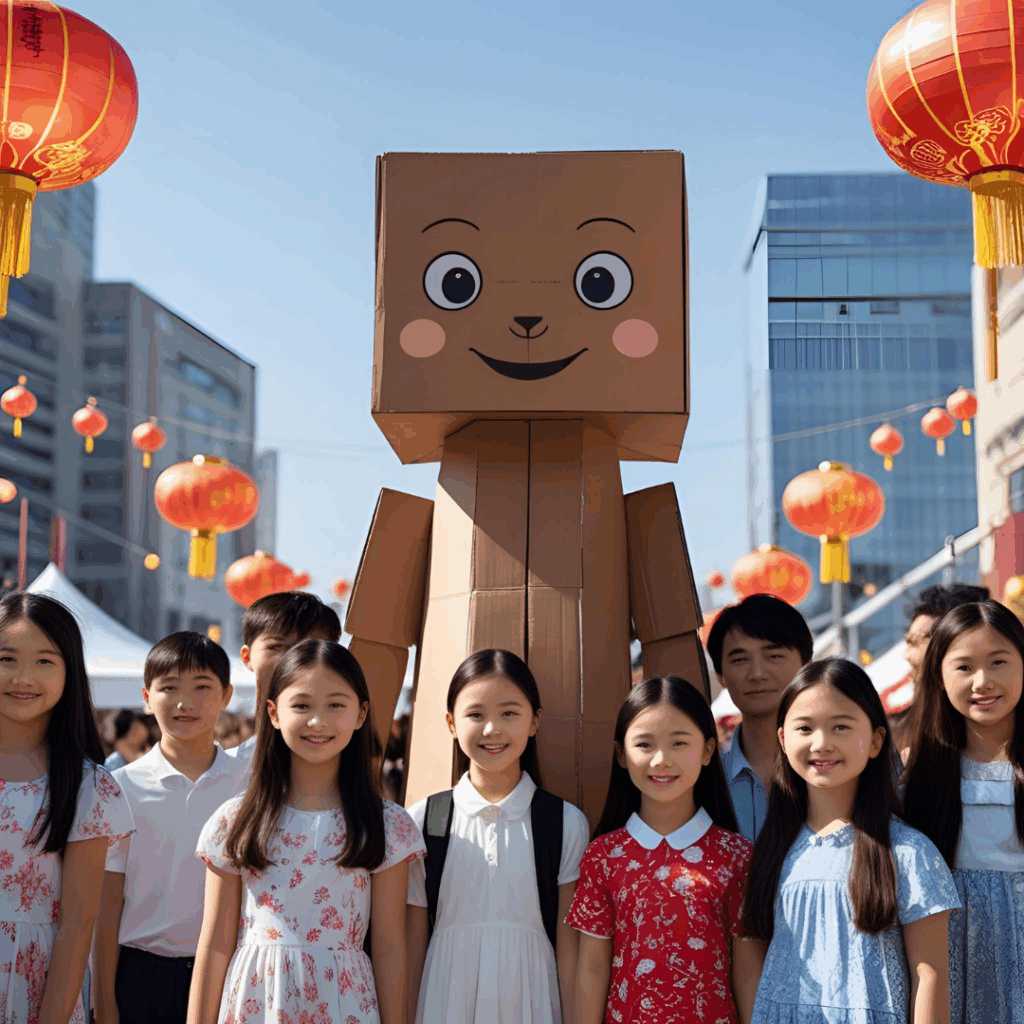
Influential Artists
- Tomás Saraceno: Known for large-scale, floating installations, Saraceno’s use of alternative materials inspires cardboard-based creations.
- Isaac Cordal: While famous for his small concrete figurines, Cordal’s commentary on urban space inspires larger-scale cardboard interventions.
- Collectif Etc (France): This group creates outdoor spectacles featuring giant puppets and moving characters using cardboard, fabric, and simple mechanics.
Creative Collectives and Movements
- Paper Monster Project: An initiative that builds enormous cardboard creatures to raise environmental awareness.
- La Machine (France): Though known for metal structures, their mechanized giants influence cardboard artists seeking to integrate motion and storytelling.
Local and Cultural Elements
Many artists draw inspiration from local folklore and cultural icons, building characters that reflect the heritage of the neighborhoods where they’re displayed. This adds emotional resonance and community identity to the works
Frequently Asked Questions (FAQ)
What’s the biggest challenge in building giant cardboard characters?
Balancing structural stability with portability is key. The sculpture must be strong enough to stand but light enough to move or assemble on-site.
Can cardboard withstand weather conditions?
Cardboard is vulnerable to moisture. For outdoor use, artists apply waterproof coatings or create temporary shelters to protect the sculpture from rain.
How can communities get involved?
Through open workshops, school projects, and collaborative build sessions, community members can contribute to the design and construction, creating a shared sense of ownership.
Can these characters be animated for performances?
Absolutely. With simple joints, levers, and props, artists can bring the characters to life during parades, plays, or street performances.







